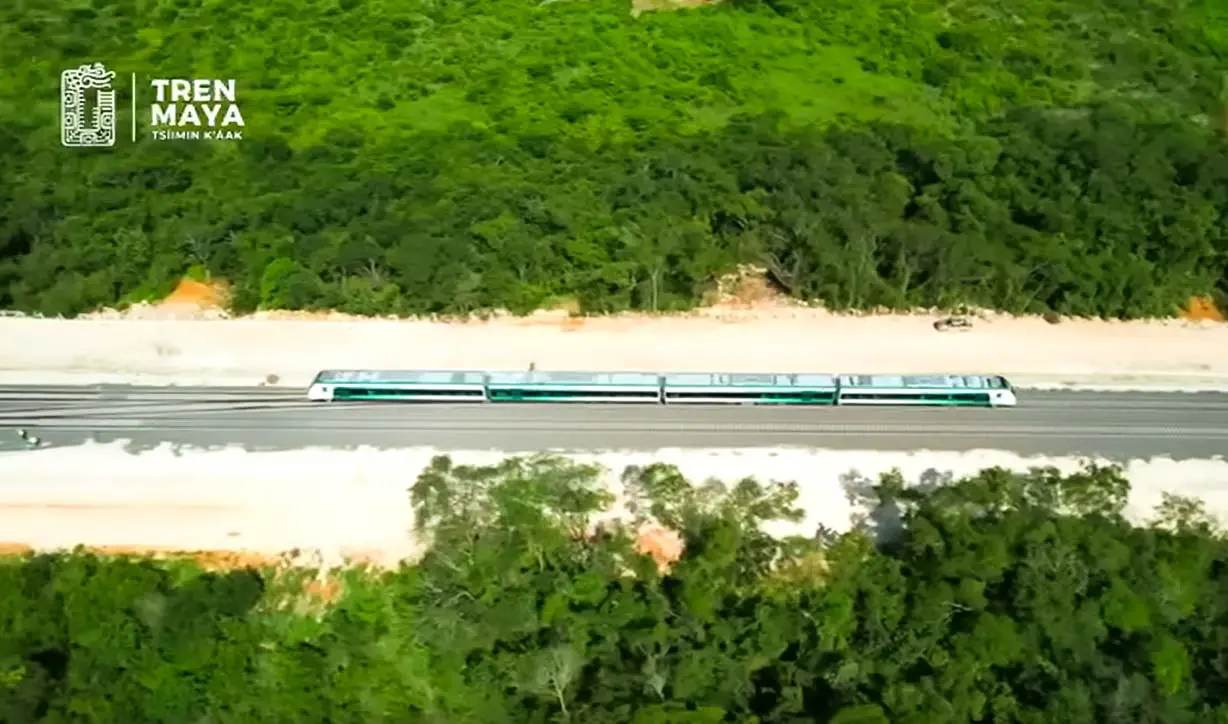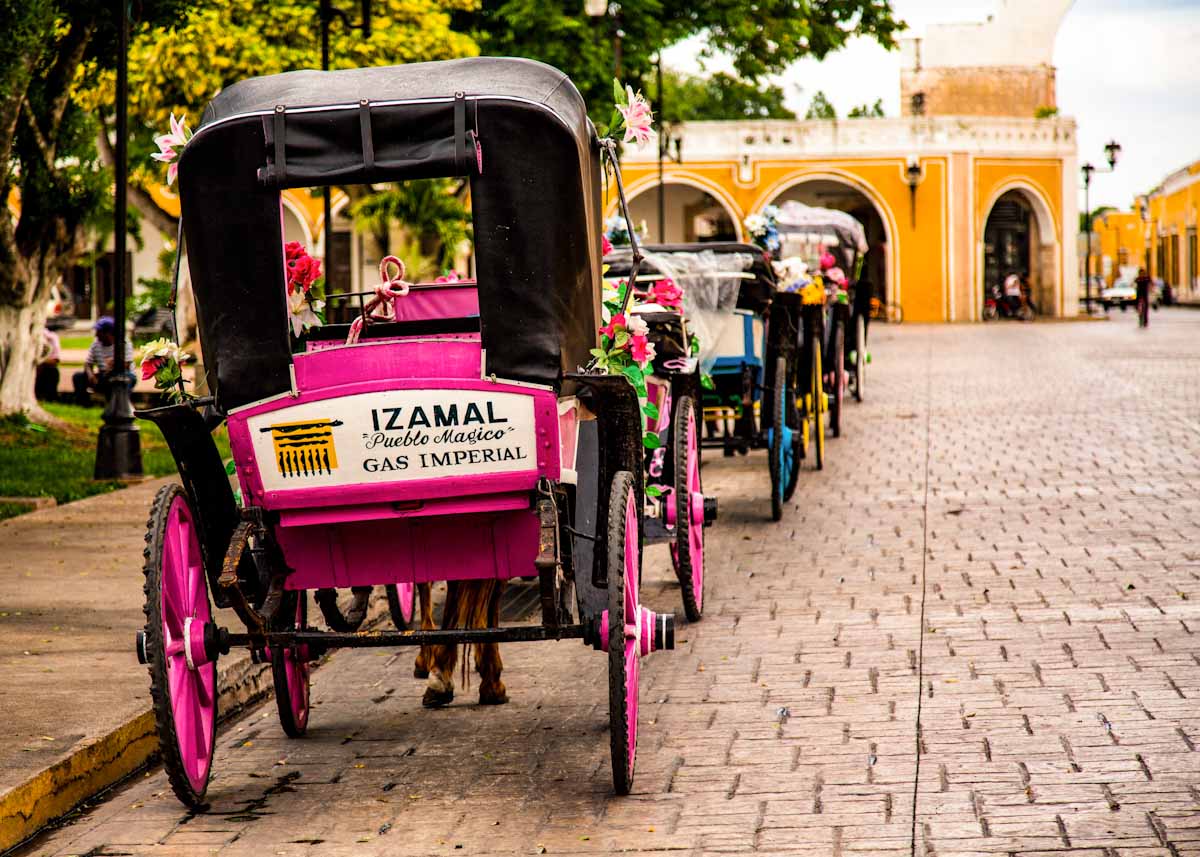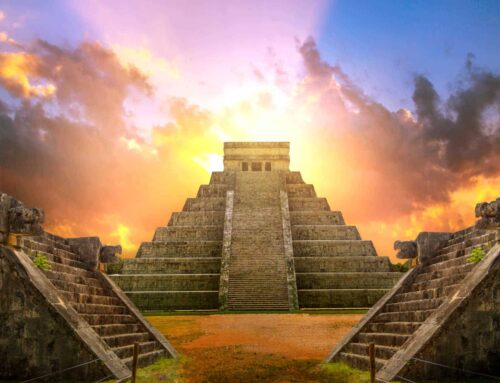Tren Maya (Mayan Train): 1500 km of rail to secret worlds
Tren Maya (Mayan Train): 1500 km of rail to secret worlds
Tren Maya (Mayan Train): 1500 km of rail to secret worlds
The world of the Maya holds many secrets – and most of them are quite remote. Now, with the Tren Maya (Mayan train), Mexico has created a completely new approach to these places. Here you can find out everything about the new gateway to the world of the Maya.
Content: Tren Maya (Mayan Train): 1500 km of rail to secret worlds
What is the Mayan Train?
If you spend your vacation in Mexico and want to explore the world of the Maya, this is often not so easy. There are an incredible number of exciting old Mayan cities. And most of them are located in the outback of the Yucatan Peninsula.
Of course, it is no problem from the Riviera Maya with its tourist hotspots such as Cancún or Playa del Carmen to quickly book a tour to Chichén Itzá or Tulum. But just to get to Chichén Itzá takes four hours. For one way. And if you want to go to Uxmal as well, it’s going to be pretty tight. Fantastic sites like Palenque are just out of reach.
Now, under the government of President Andrés Manuel López Obrador (AMLO for short), Mexico has launched a unique project: the Mayan Train. On 1500 km of rails, you can discover the secrets in the Mayan world that have hardly been accessible so far.
Furthermore, you’ll get to see locations in Mexico that you’d never be able to get to. And nature reserves you’ve probably never heard of. For us, this is an incredible opportunity that we want to take advantage of as soon as possible.
The route of Tren Maya
The goal of Tren Maya is to connect the tourist resorts of the Caribbean coast with the little-known cities and Mayan ruins in the hinterland. And all this over a distance of 1500 km of rail. The route runs from Palenque in the state of Chiapas to Cancún in Quintana Roo. There are two routes that allow you to circumnavigate the entire Yucatan Peninsula.
The western route of the Mayan train runs from Palenque north along the Gulf Coast of Mexico. It leads via Campeche to Mérida, the capital of the state of Yucatan, which is really worth seeing.
From Mérida, the route continues eastwards, via Chichén Itzá and the beautiful town of Valladolid to the famous Caribbean metropolis of Cancún.
In Cancún, the train turns south. Along the coast of the Caribbean Sea, the route goes to Playa del Carmen and Tulum to Chetumal, the capital of the state of Quintana Roo. From there, the rails head west again to meet the western route from Palenque to the north in Escárcega.
The equipment of Tren Maya
The Mayan train is a high-speed train designed for a cruising speed of 160 km/h. The project was realized in cooperation with Deutsche Bahn and the Spanish train company Renfe.
There will be three different models for the train sets themselves:
All 42 railcars and 219 wagons for the Tren Maya will be produced by the French company Alstom in Ciudád Sahagún in the Mexican state of Hidalgo.
What are the benefits of the Mayan train?
At the beginning of the project, Tren Maya was often the focus of political criticism. The route for the tracks was cut right through the jungle. To be honest – I thought that was bad too. And this despite the fact that the Mexican government has reforested elsewhere for every tree that was cleared.
However, I also believe that the railway line will give the region an opportunity for development and prosperity. Until now, southeastern Mexico has tended to be a forgotten, hard-to-reach corner.
Therefore, in our opinion today, the advantages of the train connection outweigh the disadvantages by far:
With the Plan Integral de Desarrollo (Development Plan for the Region), not only roads and railways were built in the region, where previously there were only sandy paths. Medical care, schools, sports centers, wells for drinking water, electricity, internet and even houses instead of the traditional huts for many families have been completely rebuilt.
The opening of the train line will be a great thing for tourists. But it will also offer people from the region completely new perspectives for the future.
Tren Maya Stations
At this point we would like to introduce you to the route of the Tren Maya. We won’t go into the sights at the various stations here – we’ll show you them in another post.
The new railway line will be divided into seven sections, which will be opened step by step in the coming months. The train is expected to stop at strategic locations, where the supply of passengers will also be well prepared in all respects.
At many of the sites there are larger stations with developed infrastructure, others offer smaller stops.
However, there may still be small changes, as this article was written before the opening of the Mayan Train.
Section 1: Palenque – Escárcega
This section of the route, with a length of 228 km, includes the following stations:
Palenque, Chiapas (Railway Station)
Boca del Cerro, Tabasco (Railway Station)
Tenosique, Tabasco (Stop)
El Triunfo, Tabasco (Railway Station)
Candelaria, Campeche (Stop)
Escárcega, Campeche (Railway Station)
Section 2: Escárcega – Calkiní
This section of the route covers 235 km and includes the following stops:
Ecárcega, Campeche (Railway station)
Felipe Carillo Puerto, Campeche (Stop)
Edzná, Campeche (Railway station)
San Francisco de Campeche, Campeche (Railway station)
Tenabo, Campeche (Stop)
Hecelchakán, Campeche (Stop)
Calkiní, Campeche (Stop)
Section 3: Calkiní – Izamal
Over a distance of 172 km, the route continues at the following stations:
Calkiní, Campeche (Stop)
Maxcanú, Yucatan (Stop)
Mérida, Yucatan/ International Airport Manuel Crescencio Rejón (Railway station)
Teya, Yucatan (Railway station)
Tixkokob, Yucatan (Stop)
Izamal, Yucatan (Railway station)
Section 4: Izamal – Cancún
The next stage is 257 kms long and stops at the following locations:
Izamal, Yucatan (Railway station)
Chichén Itzá, Yucatan (Railway station)
Valladolid, Yucatan (Railway station)
Nuevo Xcán, Quintana Roo (Railway station)
Leona Vicario, Quintana Roo (Stop)
Cancún, Quintana Roo/ International Airport (Railway station)
Section 5: Cancún – Tulum
This section of the route is just under 100 km long. But it will probably welcome most of the passengers from distant countries:
Cancún, Quintana Roo/ International Airport (Railway station)
Puerto Morelos, Quintana Roo (Railway station)
Playa del Carmen, Quintana Roo (Railway station)
Xcaret Park, Solidaridad, Playa del Carmen, Quintana Roo (Stop)
Akumal, Quintana Roo (Stop)
International Airport Tulum, Quintana Roo (Railway station)
Tulum, Quintana Roo (Railway station)
Section 6: Tulum – Bacalar
This stage covers 254 km and the following stops:
Section 7: Bacalar – Escárcega
The last part of the Mayan train stretches for about 287 km:
Bacalar, Quintana Roo (Railway station)
Chetumal, Quintana Roo/ Airport (Railway station)
Xpujil, Campeche (Railway station)
Conhuas, Campeche (Stop)
Centenario, Campeche (Stop)
Escárcega, Campeche (Railway station)
Please keep in mind that this information was researched during the planning phase for the Tren Maya. After completion of the project, there may still be changes.
When does the opening of Tren Maya take place?
The opening of the Tren Maya for the first piece of railway is planned on December 15, 2023. According to President Andrés Manuel López Obrador, the entire route should be operational by the end of February 2024. Open sales for tickets to tourists are scheduled to start in January 2024.
The first section from Campeche to Cancún is scheduled to be put into operation on December 15, 2023. On December 31, 2023, the inauguration of the route from Palenque is scheduled to take place. The last section of the line is scheduled to open on February 29, 2024.
For the inauguration of each section, the hotels will also be opened at strategic junctions along the railway line, namely in Edzná and Calakmul (Campeche), Nuevo Uxmal and Chichén Itzá (Yucatan), Tulum (Quintana Roo) and Palenque (Chiapas).
Tickets for the inaugural cruise on 15 December went on sale from 1 December. Within a few minutes, all tickets were sold out. If we really want to get seats, we will probably have to wait until spring.
What are the Tren Maya prices?
Well, it depends on two factors. Which route do you want to travel? And, are you Mexican?
As with almost everything in Mexico, Mexicans pay significantly less than tourists. That’s okay – they earn significantly less. So, if you have Mexican documents, you’re on the winning side. On our tours in Mexico, my husband only showed his credit card-sized voter ID and all was well.
According to the operator of the Tren Maya, a price of MXN 2.32 per kilometer was initially planned for tourists. That would add up to about MXN 3,400 for the entire round trip by train. At the exchange rate at the time of writing, that would be around $200 or EUR.
Given the vast region and the many sights opened up by the Mayan train, that’s not a fortune either. That’s about the price of a guided tour by bus from Cancún to Chichén Itzá before the train service opens.
Of course, parts of the route will be much cheaper. According to the operator, some stages will even cost only about 100 MXN (~ 5 USD or EUR). The cheapest tickets are said to be available from 4 USD/EUR.
The inaugural trips are likely to be significantly more expensive. The price level mentioned here, according to https://trenmayaa.com, will probably only emerge after the complete opening of all sections of the route.
Free travel on the Mayan train
The Mayan train is supposed to be affordable for everyone. According to current information, a standard ticket will cost 60 MXN. For foreign tourists, the price is supposed to be 80 MXN (~ 4 USD/EUR). Students with a current student ID will likely pay 30 MXN.
However, there will also be exceptions to this rule – some groups of people will be allowed to use the Tren Maya for free. According to our current state of knowledge before the opening, it should be older people (probably over 60 years old?), pensioners, children under 5 years old and people with disabilities. For children under the age of 12, there will only be free rides on Saturdays.
Tren Maya Tickets
Do you want to buy tickets for the Tren Maya? Then take a look at eTicket. This is NOT a paid affiliate link. It is the only official point of sale at the time of writing this post – before the opening of the railway line.
However, the Mayan train will have its own website with a portal for selling tickets. The project is already in the way. You will also be able to buy tickets at some stations, such as the stations of Campeche, Mérida, Valladolid and Cancún. In any case, ticket sales are registered to the respective person with the number of the seat. This process should prevent resale on the black market.
If the reservation doesn’t work out right away on the first try, don’t lose heart. As President Andrés Manuel López Obrador said in one of his daily morning reports (Mañaneras), at the moment there are only four trains for the railway line, just before the opening.
However, more and more are to be added step by step until there are 42 railcars plus wagons. You just can’t do it all at once. It’s a huge project and costs a bit more than pocket money.
Do you want to know more about Tren Maya?
At this moment – just before the opening of the first stage – no further information is available. But that’s going to change very quickly. We will stay tuned and will be happy to keep you up to date!
You might also be interested in this






















